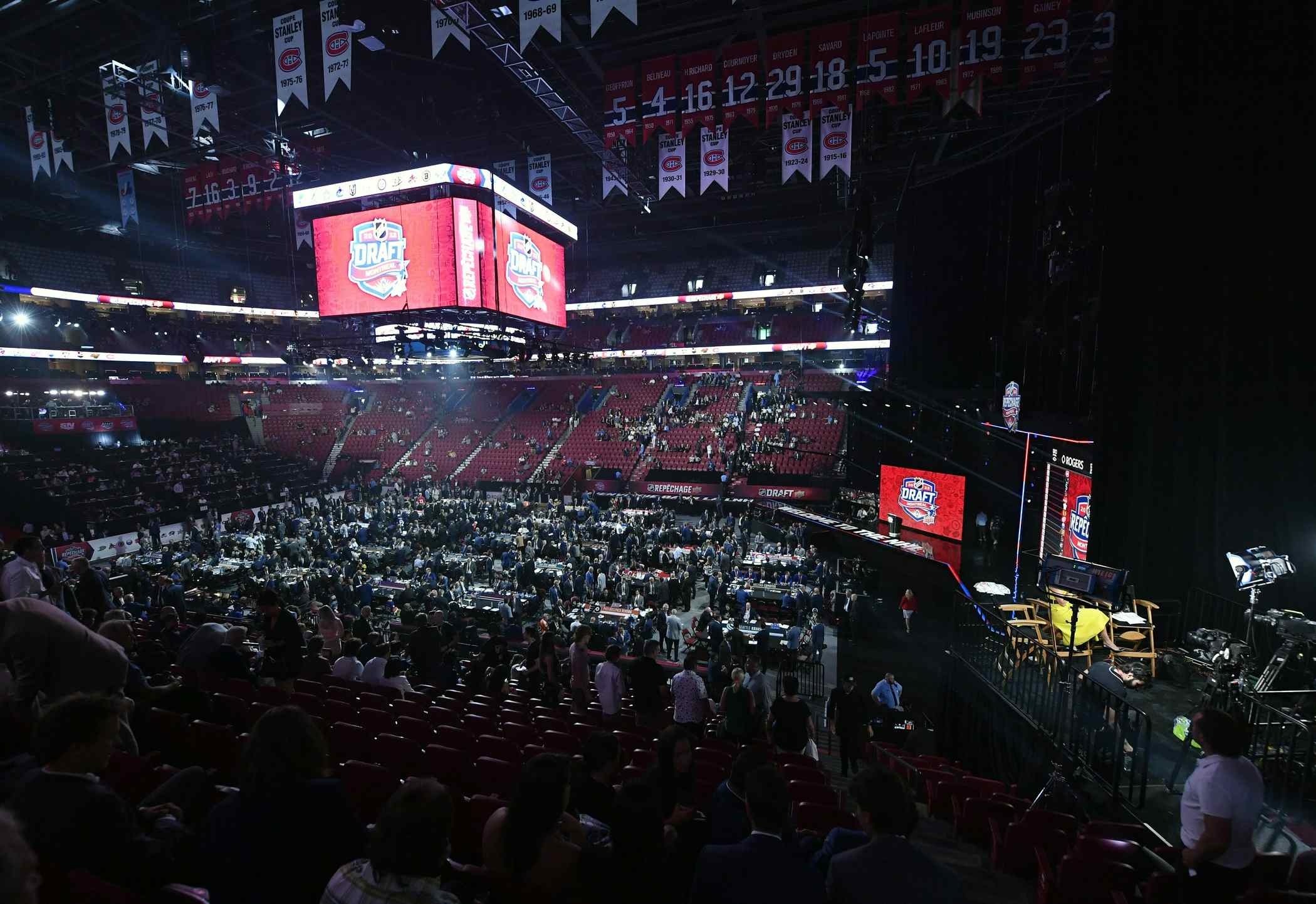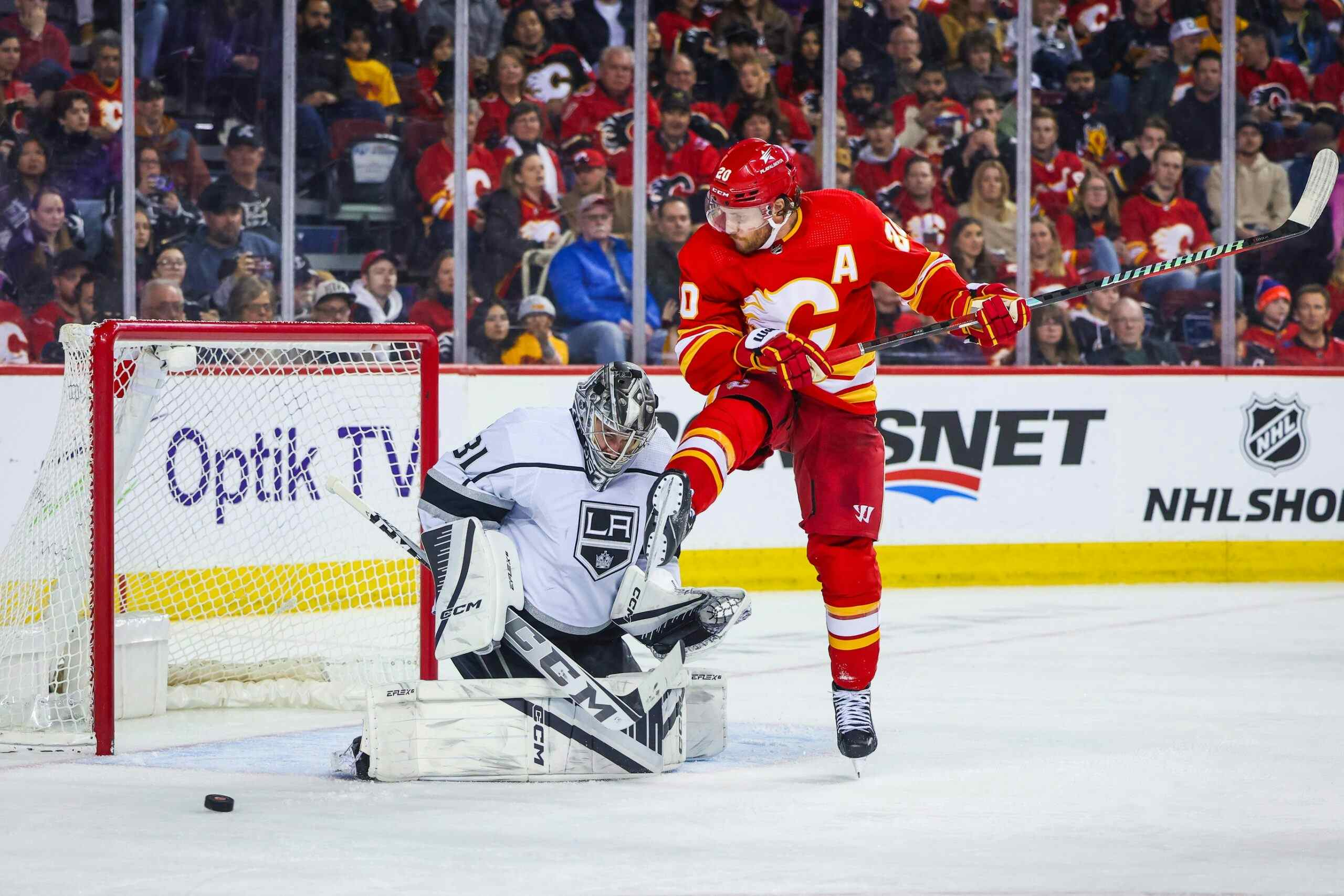5 things: Wabbit season
By Ryan Lambert
9 years ago
1. A tall order
The Flames made it through to the second round.
Many had not counted on Eddie Lack and, later, Ryan Miller, being quite so bad as they were. Nor did they count on the Canucks’ depth forwards getting so easily devoured by the bottom-nine guys on the Flames. As has been covered extensively, the Sedins flat-out gobbled up the Stajan line (Vancouver something in the neighorhood of 71 percent possession when they were on), but everyone else in a Vancouver sweater got pushed around pretty good. It was a trend we frankly didn’t see much of in any games during the regular season — Calgary winning depth battles, that is — there basically weren’t any full-time Flames this season who even approached 50 percent possession. Not that you didn’t know that, but it highlights how unusual the Canucks series was in terms of what we’d seen previous to this.
So kudos to the Flames for getting that done. They fundamentally changed the way they approached the game to some extent — or just ran over Vancouver, which is also a very likely scenario because the Canucks, likewise weren’t very good either. Better than the Flames on paper, but no one would have mistaken them for a real Cup contender.
The Ducks, obviously, are a whole different challenge, because they are a team that is actually both good and deep. The Flames likely cannot count on the low shooting percentages Vancouver doled out, because Anaheim has for the last several years been the one team in the league to successfully do what Calgary did this year: drive shooting percentage for all 82 games (and beyond) despite subpar possession numbers.
And so if it comes down to matchups, for me the most interesting ones are where the Flames are actually good and deep, and that’s at the center position.
One of the few things I actually liked about the Flames lineup this year was how strong the center group was; if Matt Stajan is your No. 3, you’re doing pretty well for yourself. Many teams in the NHL would be lucky to have such a group down the middle, and that was bolstered with Monahan taking a big step froward.
But the reason I’m so optimistic that the Ducks will clobber Calgary is that, whereas Vancouver’s No. 2 center was Nick Bonino — a Ducks cast-off, it’s worth noting — Anaheim’s is Ryan Kesler. The odds of Calgary getting anywhere near dominant, rather than dominated, down the lineup are therefore greatly diminished.
(Please understand these are not meant to say the top lines, second lines, third lines, and fourth lines will go head-to-head. That isn’t how hockey works, and Bruce Boudreau loves to go with matchups. I don’t think I’d make too many guesses as to who plays against whom in this series. Also, possession in small samples like this isn’t as meaningful as 82-game samples, obviously, but you work with what you have.)
2. Monahan vs. Getzlaf
This isn’t really a discussion worth having. Monahan is good. No doubt about that. Maybe he’s even very good. He’s also in his second year in the league, so making such pronouncements, at this point, seem a little premature.
And one thing he certainly isn’t is Ryan Getzlaf. Very few people are.
You don’t even have to recite Getzalf’s credentials. His merely being Ryan Getzlaf is his resume. A Cup, a few gold medals, etc. He had a bit of a down year this time out; only 25 goals and 70 points in 77 games. But that’s a down year. And that’s terrifying.
And in the last two years against Calgary, Getzlaf is running close to 56 percent corsi-for, and no surprise here, but the only two to play him to a draw are Mark Giordano and TJ Brodie. No Giordano for this series is therefore deeply problematic. And by virtue of Deryk Engelland having played in the Eastern Conference for most of his career, we don’t have a good baseline for comparison. You can, however, bet it’s a downgrade from what Giordano would have provided.
On the other side of the coin, Monahan has generally not been very good against most Ducks he’s faced. We’re dealing here with very small samples, 20 minutes here, 30 there, etc. But in a little more than an hour of 5-on-5 time, he’s below 50 percent, which you’d expect.
This doesn’t look like a matchup Calgary can win. Anyone arguing otherwise is being a little foolish because of which team they root for.
(And you can think the world of Johnny Gaudreau and Jiri Hudler, but neither is, was, or ever will be Corey Perry. Again, few are.)
3. Backlund vs. Kesler
For me this is a more intriguing matchup, because while you’d obviously go with Ryan Kesler in terms of who you expect to outscore the other, Mikael Backlund is nothing if not a strong possession player, at least relative to the rest of his team.
In his career, Kesler has been a very good possession player, and has occasionally put up some nice points totals as well. Having a 45-50 point guy as your No. 2 center is generally a good thing. Having one whose team also takes 53 percent of the shot attempts when he’s on the ice is a nice added bonus. And wouldn’t you know it, the team against which Kesler has the most points in his career is the Calgary Flames.
But what’s interesting is that, this year, Kesler was actually below 50 percent against the Flames and had just two points in five games (he was also a minus-5!).
Meanwhile, Backlund actually had two points in three games against Anaheim this season, but only five in 17 for his career. And he also got run out of the building in terms of possession over the last two years (44 percent).
And so while Kesler had a rougher go of things overall than his first-line teammates, it’s hard to pick against him as the more likely to succeed in this series going head-to-head against whatever Calgary’s throwing out there for the second-most minutes. He was a monster against Winnipeg, and the Jets are better than the Flames.
3. Stajan vs. Cogliano
Now, these two actually haven’t play many minutes against each other the last two seasons; the Flames forward against whom Cogliano plays the most are Jiri Hudler and Johnny Gaudreau, which indicates they might try to line-match Cogliano with Monahan (which makes some amount of sense, but when the playoffs roll around, things get a little weird; and anyway, the difference between those matchups and some of the rarer ones was like two minutes of 5-on-5 hockey).
Now, here too, Cogliano dominated the Flames in terms of possession (56.9 percent) and that’s because he’s a really good bottom-six guy. He was miscast as more than that in Edmonton but he’s really found a niche in Anaheim. Stajan, again, is a very good No. 3 center for what he is, and he was arguably the Flames’ best forward in the series against the Canucks.
But the Ducks buried him the last two seasons: 3-1-4 in five games sounds good (all three goals this year, two of them being in a 6-3 win in mid-March), but the 25.8 percent possession certainly doesn’t.
Cogliano has done a very good job of pounding third-line matchup so far this postseason, but one suspects things will be tougher from Stajan than, say, Mark Scheifele. I’d still lean toward Cogliano as a center who can drive play better than Stajan, but it’s certainly closer than the last two matchups were.
4. Colborne vs. Rakell
At this point we’re getting down into the real fine details, because neither Rakell nor Colborne are used particularly heavily (indeed, Josh Jooris took more draws than Colborne in the Vancouver series, even as Colborne got an extra four minutes a night at 5-on-5).
But Rakell, too, straight-up ran Winnipeg’s show in terms of possession. That’s common theme here, but when talking in broad terms about how well Anaheim did, it’s important to highlight that it was more or less throughout the lineup. Overall team numbers can be obfuscating at times — again, the Flames were below 50 percent as a team, thanks entirely to how well the Sedins did — but looking at how even Rakell ran the show at the bottom of the lineup can’t inspire much confidence.
Colborne, I thought, was pretty bad against Vancouver. Crushed in possession, outscored, etc. I’m not sure you consider him a good option, which I guess is why Hartley had Jooris take more draws.
This is another area that, for me, Calgary gets killed on. Rakell is dominant against the Flames — of the 70 shot attempts that came when he was on the ice against the Flames the last two years, 50 were Anaheim’s — and Colborne gets shelled — 30 of 70 in his team’s favor, for another rather convenient round number — and that tells the story pretty effectively.
The less seen of Colborne, I think, the better off the Flames will be.
5. The X-factor
Of course, two of those guys get shuffled down the lineup a bit if Nate Thompson is healthy for Game 1, which seems to be a possibility. He actually plays very well against the Flames (59.6 percent possession) and really fills out the team’s depth after missing the entire Jets series.
If he draws in, that throws a lot of matchups out of whack, and given that his role is more or less purely a checking one, you can imagine that he’d get the Monahan line matchup while Boudreau scrambles to put out Getzlaf and Perry against weaker opposition. Which you’d have to think would go well for the Ducks.
Look, there’s a reason the Flames are 3-6 against Anaheim the last two seasons, and haven’t won at Honda Center in either the regular season or playoffs since 2006. It’s that Anaheim has been really good for a really long time. And while anything can happen in any individual game, and even over seven, the odds aren’t really in Calgary’s favor.
They haven’t been all season, of course. Things catch up with you.
Recent articles from Ryan Lambert





